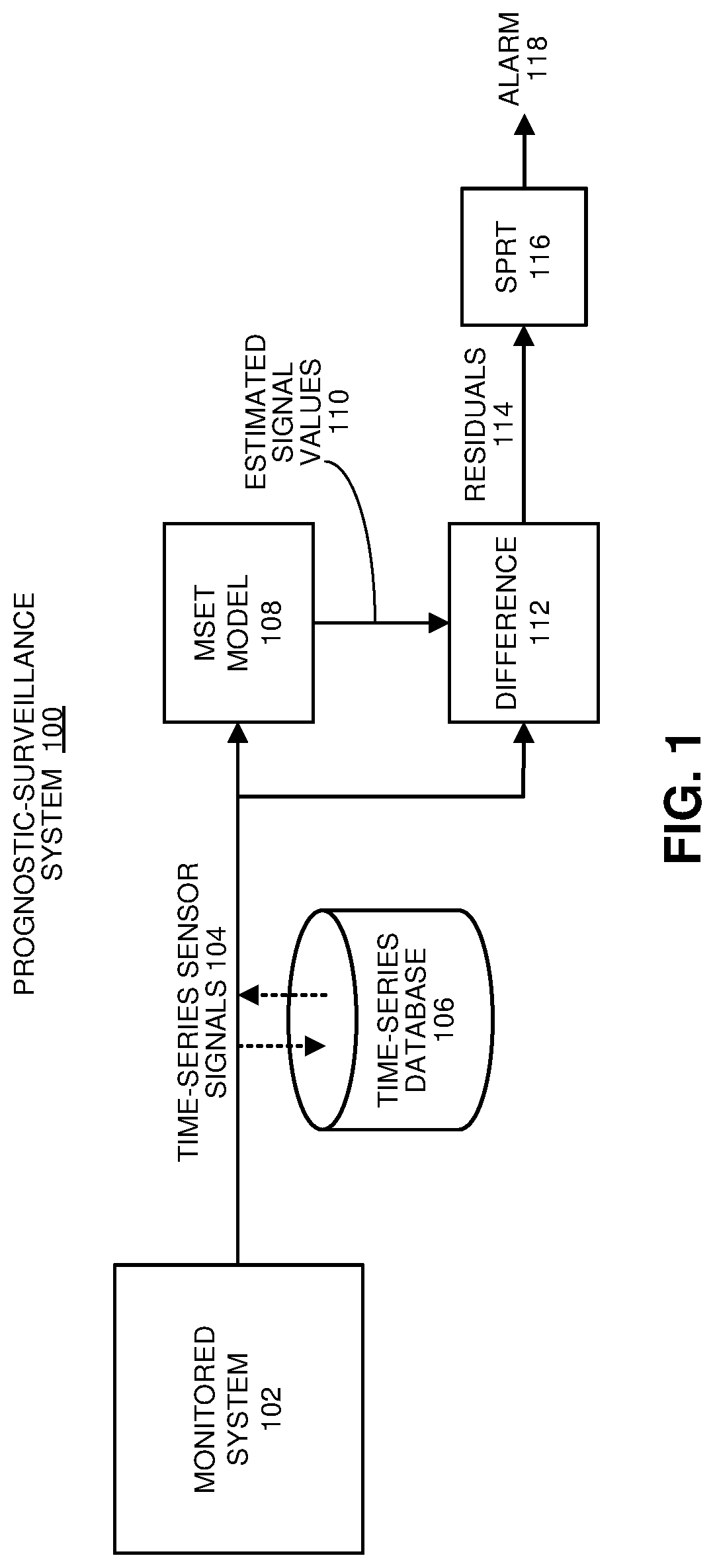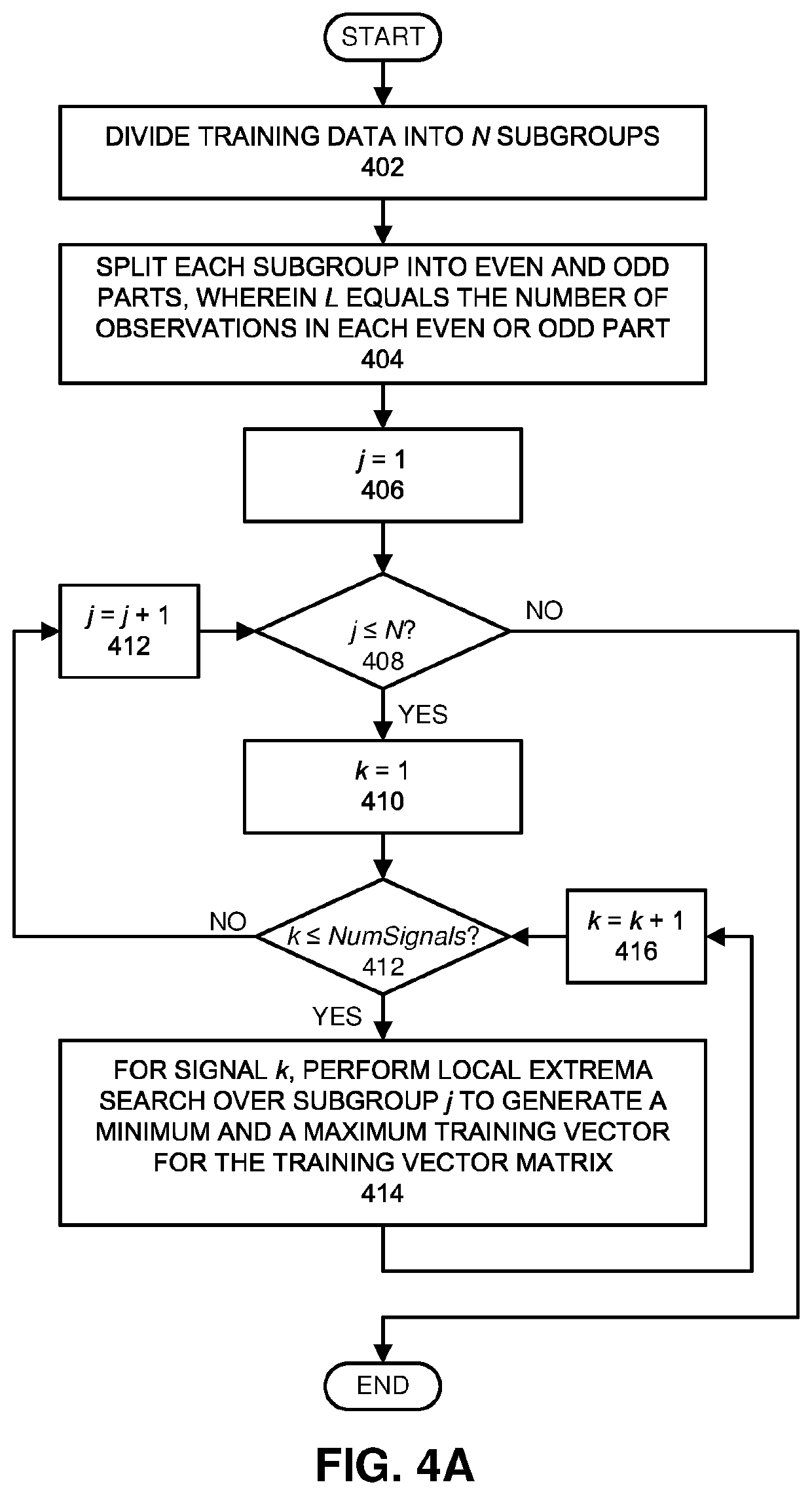Maximizing the operational range for training parameters while selecting training vectors for a machine-learning model
a machine-learning model and operational range technology, applied in computing models, probabilistic networks, instruments, etc., can solve the problems of ml models not being able to make accurate predictions outside the operational envelope of their training range, ml models likely to produce multiple anomalies, and contain a significant amount of noise, so as to reduce false alarms and maximize the operational range
- Summary
- Abstract
- Description
- Claims
- Application Information
AI Technical Summary
Benefits of technology
Problems solved by technology
Method used
Image
Examples
example
[0042]FIG. 5 illustrates a comparison on the process of selecting training vectors for an inferential model between the conventional approach and our new innovative approach in accordance with the disclosed embodiments. In this example, we have a dataset comprising 12 observations and two signals, which is divided into two time windows (i and i+1) having six observations each. Note that in the conventional approach, the odd-numbered observations are used for training and the even-numbered observations are used for validation, or vice versa. Hence, the signals are divided into a training set 501 and a validation set 502 as is illustrated in the middle column of FIG. 5. Note that in time window i, training set 501 has oddmin=2 and oddmax=9. Under a naïve approach, the row for oddmin=2 and the row for oddmax=9 are selected to be training vectors.
[0043]However, under our new approach, which is illustrated in the right-side column in FIG. 5, because evenmax=12 for time window i in valida...
PUM
 Login to View More
Login to View More Abstract
Description
Claims
Application Information
 Login to View More
Login to View More - R&D
- Intellectual Property
- Life Sciences
- Materials
- Tech Scout
- Unparalleled Data Quality
- Higher Quality Content
- 60% Fewer Hallucinations
Browse by: Latest US Patents, China's latest patents, Technical Efficacy Thesaurus, Application Domain, Technology Topic, Popular Technical Reports.
© 2025 PatSnap. All rights reserved.Legal|Privacy policy|Modern Slavery Act Transparency Statement|Sitemap|About US| Contact US: help@patsnap.com



